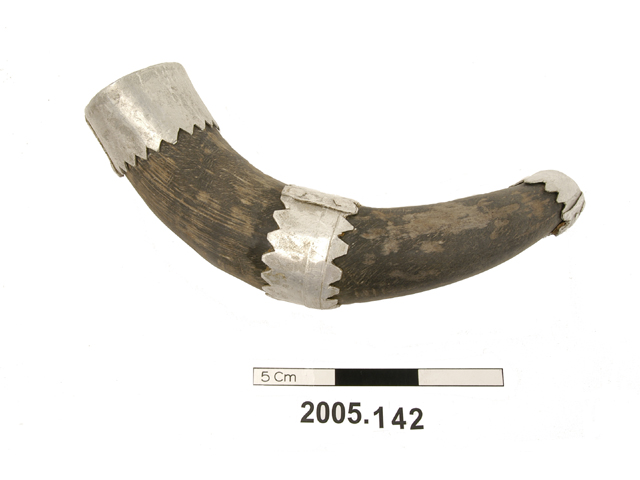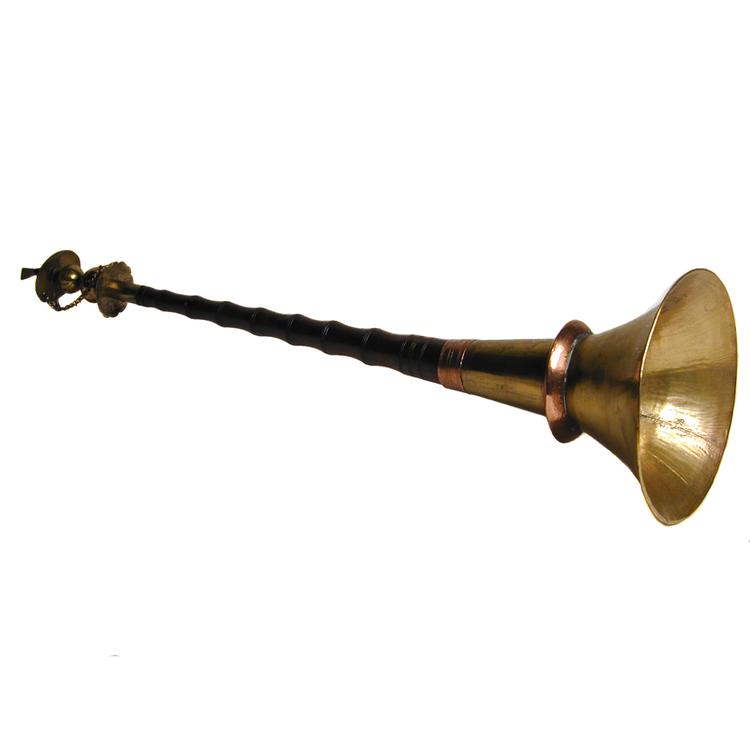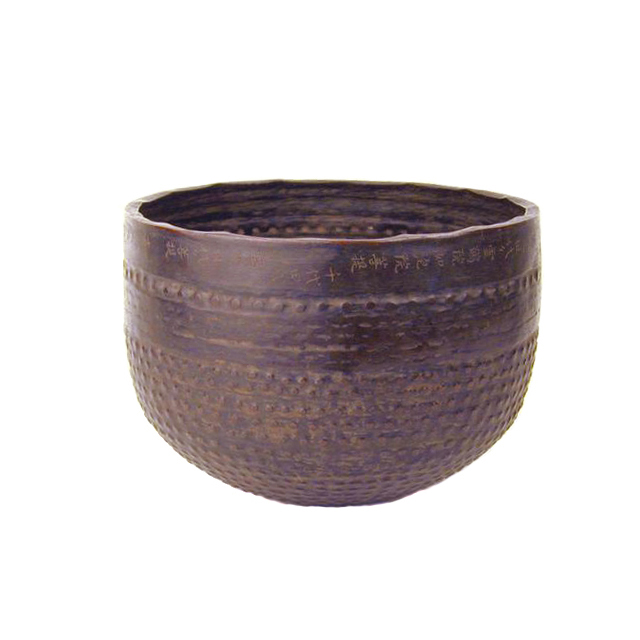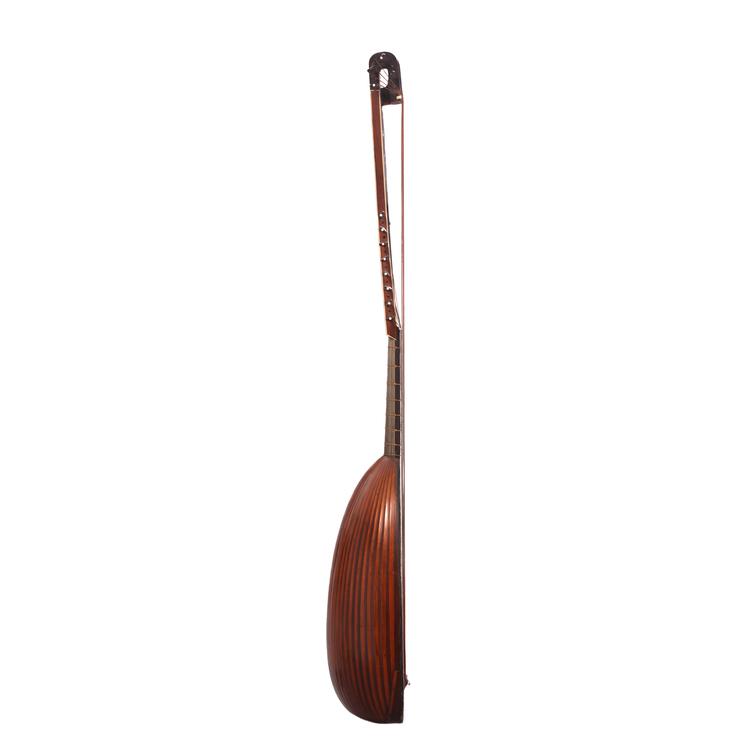
Ceremonial bullroarer with incised and painted designs, used in the hevehe ritual cycle.
Bullroarer, Imunu, Elema People, Orokolo, Papuan Gulf, Papua New Guinea. The human image engraved on this Elema bullroarer takes the ‘presentation pose’ of many decorative human images to be found on objects produced around Orokolo in the Papuan Gulf. This was a masculine pose associated with the agibe skull-racks on which headhunting trophies were displayed, and it symbolised the power of Elema men to control spiritual forces in the environment. The use of the bullroarer was ceremonially important throughout the Papuan Gulf. Among the Elema and Purari, bullroarer cults were influential organisations, and the use of the instrument was central to initiations, fertility rites and warfare. The most sacred, ‘weeping bullroarers’ (imunu viki) were reserved for playing only during the funerals of chiefs. Snakes were often associated with bullroarers by the Gulf peoples, and it is thought that the sinuous line decoration found on many may represent this animal. Wood. Late 19th Century. Formerly in the private collection of J.S. Dalton.


































































































































































































































































































































































































































































































































